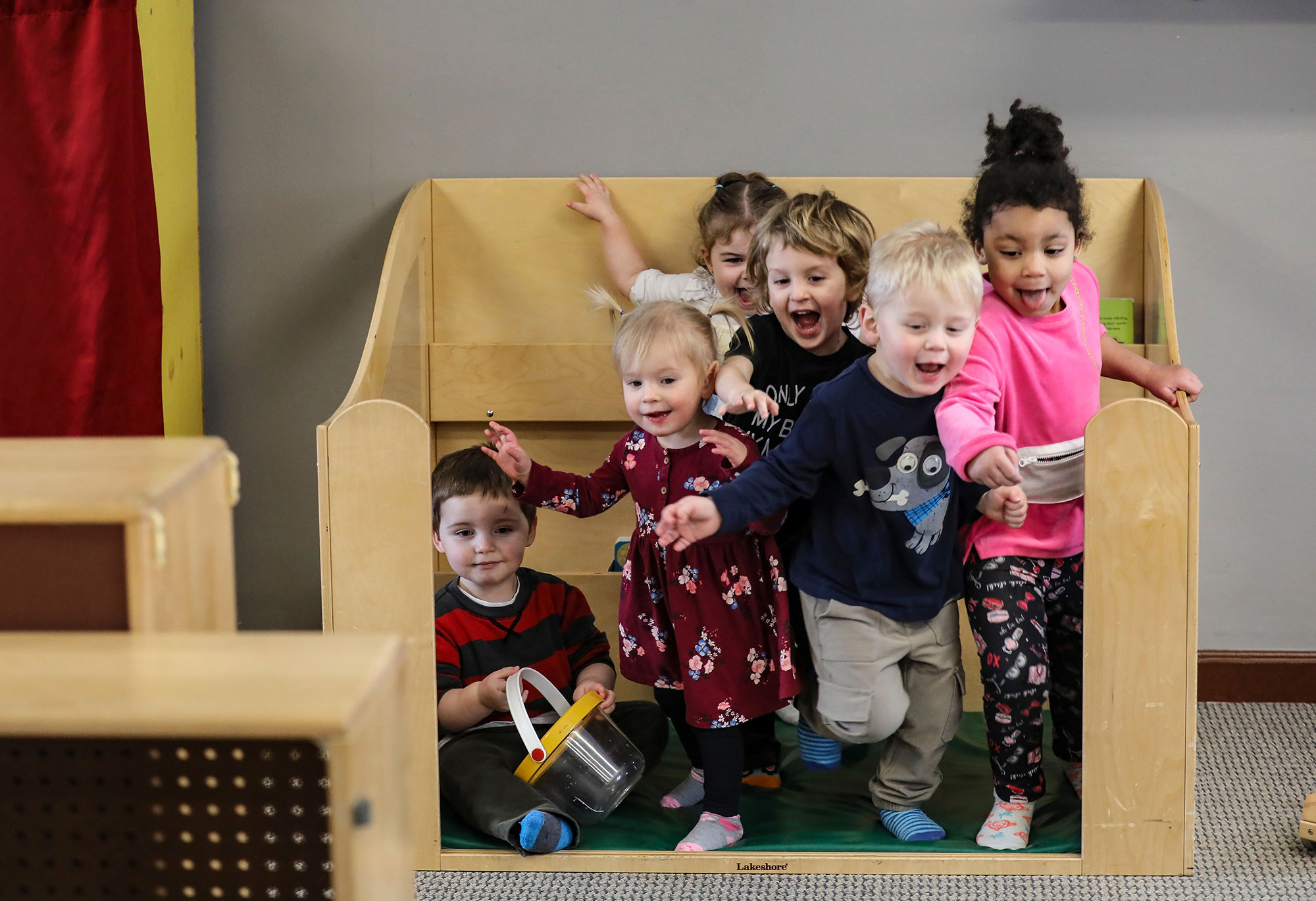Last month, the Annie E. Casey Foundation released its annual Kids Count Data Book, which ranks states on child well-being using a selected set of indicators in economic security, education, health, and family and community. New Hampshire typically ranks in the top five in the nation, and this year, New Hampshire came out as the number one state for overall child well-being. We also ranked first in 2017 and in 2013.
As I have written in the past, these results are really, really good. But they are also averages, and averages mask individual experience — and mask vast inequalities among children in our communities.
Ensuring that all of our kids have the chance to succeed is the main driver behind “New Hampshire Tomorrow,” the Charitable Foundation’s 10-year initiative to increase youth opportunity. How do we reconcile our top ranking with the lack of opportunity many of our kids face? The new data give much to celebrate and point to areas where we can and should do more.
With one of the highest median incomes, New Hampshire is among the wealthiest states in the union. Its child poverty rate, at 10 percent, is the lowest in the country. But that still means that one in ten children here lives in poverty. We know that children living in poverty often live in less stable home environments and more dangerous neighborhoods and have less access to everything from high-quality early childhood education to AP classes in high school and enrichment activities — all of which means they are less likely to have the chance to reach their full potential in school, communities and careers.
And despite economic expansion and job growth, the Kids Count data show that New Hampshire’s child poverty rate has not changed significantly since 2010.
The averages also do not begin to touch on the stark differences between communities — often adjacent to one another — or describe the effects of economic segregation. In Manchester, one in five kids lives below the poverty line, which is just $21,000 per year for a family of three. And while more than half of Manchester’s kids are eligible for free and reduced-price lunch (a reliable proxy measure for kids living in low-income households), in neighboring Bedford, only 5 percent of kids are eligible for free and reduced-price lunch. Similar differences exist elsewhere: In Windham, 3 percent of kids are eligible for free and reduced lunch compared to 43 percent in neighboring Nashua; 7 percent in Durham compared to 40 percent in Rochester; 6 percent in Bow compared to 37 percent in Concord.
I mention this dichotomy because research shows that outcomes for low-income children are significantly better if they grow up in economically integrated neighborhoods with kids of varying backgrounds. The low-income kids growing up in Manchester, Nashua, Concord and Rochester would have much better outcomes if they grew up in neighborhoods where the overall poverty rate was lower, where there were more kids from higher-income backgrounds. They would do better in school and have higher incomes because they would have access to better schools with smaller class sizes and better teachers and live in neighborhoods with more public services. The good news is that, while there are large economic differences between communities in New Hampshire, as a state overall we are still far less economically segregated than other parts of the country. The question is, how do we ensure that mixed-income cities, towns, neighborhoods, and school districts stay that way — and how do we create opportunities for places that are segregated by income to become better integrated.
In the community category, New Hampshire has always ranked very high. Our state has high education levels compared to other states, and only 6 percent of our children live in families where the head of household lacks a high school diploma. The community category includes a metric on the percent of children living in high-poverty areas. This measure is closely related to levels economic segregation and income inequality I mentioned earlier. In New Hampshire, 2 percent of our children — or 5,000 kids — live in high-poverty areas, compared to 12 percent nationwide. And a note of caution: the trend on this number is going in the wrong direction in New Hampshire. While 2 percent is certainly very low, this number was only 1 percent in 2010. Ensuring that this upward trend does not continue will be key to increasing opportunity and outcomes for New Hampshire’s most vulnerable kids.
In the education category, New Hampshire kids do better on reading and math tests compared to kids in the rest of the nation, and we have shown some improvement in both since 2010. Our high school graduation rates also remain high. The one education indicator that leaves significant room for improvement is the large percentage (50 percent) of New Hampshire’s three- and four-year-olds who are not in school. Quality preschool programs have been proven to be particularly beneficial for low-income children in improving their educational outcomes later in school. While most communities now offer full-day kindergarten, access to quality publicly funded preschool is not widely available in New Hampshire.
In the health domain, New Hampshire has made significant progress in ensuring that children have health insurance. Only 2 percent of New Hampshire kids are without health insurance, compared to 5 percent in 2010. This progress is largely a result of increased access to the Children’s Health Insurance Program (CHIP) administered under Medicaid. Research has shown that having health insurance during childhood has been linked to fewer chronic health conditions and better educational attainment.
Certainly, there is a lot to celebrate here. And yet, we cannot become complacent. As one of the wealthiest states in the nation, we have to ask ourselves if we are doing enough to ensure that all of New Hampshire’s children are poised to succeed, regardless of the neighborhood they are born in, the school district they belong to, or the income their family is able to provide.



















